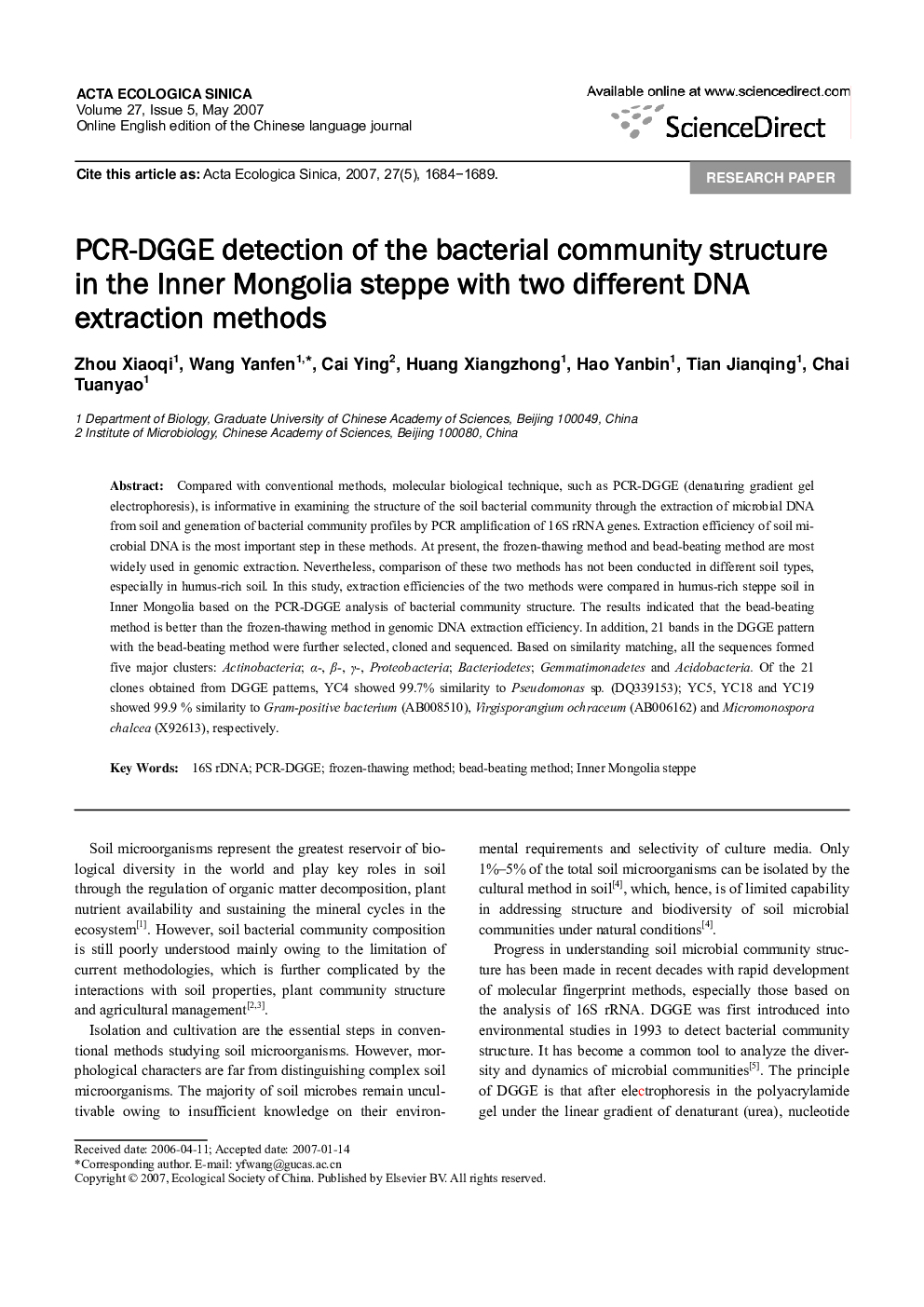| Article ID | Journal | Published Year | Pages | File Type |
|---|---|---|---|---|
| 4380522 | Acta Ecologica Sinica | 2007 | 6 Pages |
Compared with conventional methods, molecular biological technique, such as PCR-DGGE (denaturing gradient gel electrophoresis), is informative in examining the structure of the soil bacterial community through the extraction of microbial DNA from soil and generation of bacterial community profiles by PCR amplification of 16S rRNA genes. Extraction efficiency of soil microbial DNA is the most important step in these methods. At present, the frozen-thawing method and bead-beating method are most widely used in genomic extraction. Nevertheless, comparison of these two methods has not been conducted in different soil types, especially in humus-rich soil. In this study, extraction efficiencies of the two methods were compared in humus-rich steppe soil in Inner Mongolia based on the PCR-DGGE analysis of bacterial community structure. The results indicated that the bead-beating method is better than the frozen-thawing method in genomic DNA extraction efficiency. In addition, 21 bands in the DGGE pattern with the bead-beating method were further selected, cloned and sequenced. Based on similarity matching, all the sequences formed five major clusters: Actinobacteria; α-, β-, γ-, Proteobacteria; Bacteriodetes; Gemmatimonadetes and Acidobacteria. Of the 21 clones obtained from DGGE patterns, YC4 showed 99.7% similarity to Pseudomonas sp. (DQ339153); YC5, YC18 and YC19 showed 99.9 % similarity to Gram-positive bacterium (AB008510), Virgisporangium ochraceum (AB006162) and Micromonospora chalcea (X92613), respectively.
